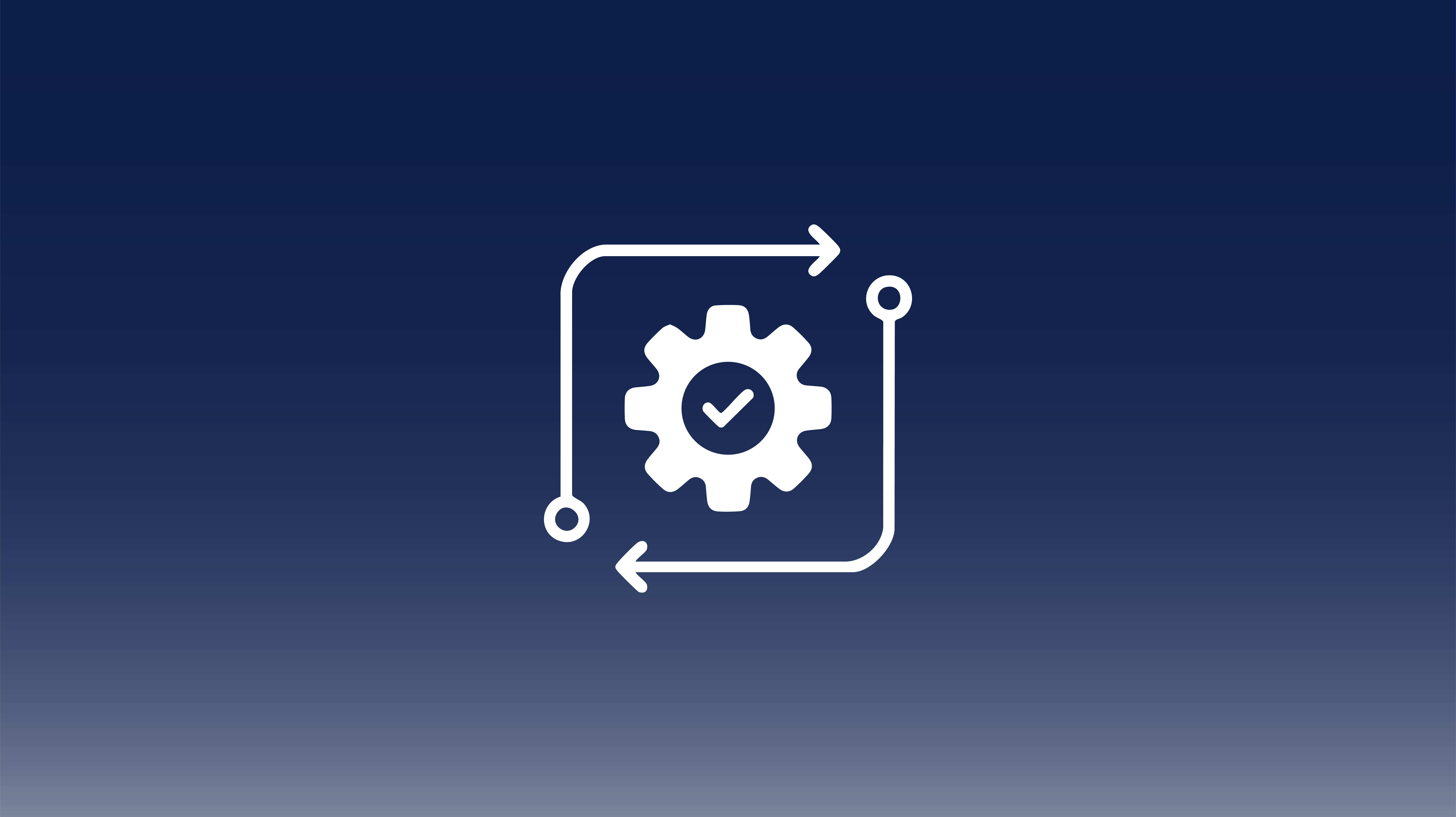Automated Accounts Receivable Programs: Cutting DSO by 30% in Six Months
In today’s economy, speed to cash is as important as speed to market. Companies that let receivables linger for 60, 75, or even 90 days are putting...
5 min read
October 1 2024
by
![]() Chris Cosgrove
Chris Cosgrove

What’s tedious, time consuming, and opens the door to errors, discrepancies, and inefficiencies in accounts payable (AP)?
If you guessed manual AP reconciliation, then you have guessed correctly.
With many small to mid-sized businesses taking an average of 25 days to process an invoice from receipt to payment (Institute of Finance and Management), it’s no wonder account reconciliation lags behind too. To top that off, as a business grows and transaction volumes increase, internal record keeping can easily reach a state of overwhelm for any AP department.
These combined challenges underscore the importance of finding solutions that not only streamline AP processing and account reconciliation but also improve the accuracy and timeliness of financial records. In this regard, automated reconciliation is becoming an indispensable tool for AP operations large and small.
Automated AP reconciliation is the process of using software and advanced technology to automatically match and verify financial records, including invoices, purchase orders, and payments, across multiple platforms. Unlike manual reconciliation, which requires manual review and data entry, automated reconciliation uses algorithms to match corresponding transactions and flag discrepancies as they arise.
The automation process involves integrating systems like enterprise resource planning (ERP), accounting software, and payment platforms to create a seamless flow of data that’s continually monitored and reconciled. Then, as automation eliminates human intervention, businesses can significantly reduce the risk of errors and improve financial accuracy over time.
Data gathered from the Institute of Finance and Management reveals that automated AP processes can reduce processing times considerably, leading to substantial cost savings and improved accuracy.
Maintaining financial integrity and operational efficiency are critical aspects of accounts payable, and account reconciliation plays an integral role in their success. Here are the other primary reasons account reconciliation is so vital to AP operations:
Prevents Fraud and Errors. Good account reconciliation ensures that every transaction is accounted for and all discrepancies are flagged early. By making it harder for fraudulent activities and financial errors to go unnoticed, this critical task assures that risk of financial loss is minimized.
Improves Cash Flow Management. Businesses can manage their cash flow better when account reconciliation is completed in a timely manner. Knowing exactly what’s owed and what’s paid helps maintain a balanced financial standing, preventing any surprises when it comes to outstanding liabilities.
Ensures Compliance. Most industries are subject to strict regulatory requirements when it comes to financial reporting, and accurate account reconciliation ensures compliance with these regulations by minimizing the risk of audits, penalties, or reputational damage.
Boosts Decision-Making: Having accurate, up-to-date financial data is crucial for strategic decision-making, so when accounts are reconciled automatically, finance teams gain real-time visibility into their financial position and are able to make better-informed decisions.
Increases Efficiency and Productivity. Automated account reconciliation frees finance teams from repetitive manual tasks and allows them to focus on more strategic activities like forecasting and financial planning. In turn, this increases efficiency and productivity.
Fraught with challenges that often lead to inaccuracies and delays, manual AP reconciliation involves extracting data from various sources, manually comparing records, and resolving discrepancies by cross-referencing physical documents like invoices and bank statements.
The first problem that generally arises from this multifaceted set of processes is the high potential for human error. Data entry mistakes, missing information, missing records, and incorrect matching of transactions are very common. As a result, even small errors can snowball into significant financial inaccuracies that affect a business’s financial statements.
Manually reconciling accounts also takes considerable time, especially for companies that deal with high transaction volumes. The result is delays in financial reporting as well as more difficulties in making critical financial decisions.
The next problem that often occurs with manual account reconciliation is a lack of real-time insights. When businesses work with outdated or incomplete financial data, it’s much harder to track the true state of accounts payable in real time.
Perhaps the most pervasive issue with manual AP reconciliation is the inability for a business to scale. The more transactions that occur, the harder it becomes to ensure every payment is accurately accounted for—and eventually—growth will stifle.
According to PYMNTS, AP departments spend as much as half of their time collecting invoices and paying suppliers rather than working on strategic initiatives that can add to the company’s bottom line.
When a business adds AP automation to its AP reconciliation processes, substantial improvements to finance operations begin to occur, and one of the main benefits noted by AP teams is a higher level of accuracy. While manual processes often result in discrepancies and inaccuracies, automation ensures transactions are precisely matched to purchase orders and receipts, therefore enhancing the accuracy and reliability of all financial data.
Time efficiency is another key advantage of automating the reconciliation process since it allows businesses to close out thousands of transactions in a fraction of the time it would take to complete them manually. In turn, this streamlined process enables finance teams to shift their focus from repetitive tasks to more strategic activities like financial analysis and long-term planning.
Besides the notable time savings made possible, automation offers a business real-time financial insights by consistently reconciling transactions. With immediate access to accurate data, cash flow management is improved and informed decision-making is supported. Potential discrepancies are therefore identified and resolved quickly, reducing the risk of financial setbacks.
One more benefit of automated AP reconciliation is that it helps businesses stay compliant with regulatory requirements. Having accurate, up-to-date financial records ensures that businesses meet industry standards and avoid the risk of audits or penalties.
Artificial intelligence (AI) and machine learning (ML) are revolutionizing automated reconciliation by introducing more sophisticated ways to analyze and match financial data. Here’s more detail about how these technologies work:
AI-Powered Data Matching: AI uses advanced algorithms to match large volumes of transactions across different systems, even when data formats differ. The system learns from past reconciliations, improving its accuracy over time.
Pattern Recognition: Machine learning enables systems to detect patterns and anomalies in financial data, flagging unusual transactions that could indicate errors or fraud. These insights can help finance teams identify and resolve issues before they become critical.
Predictive Analytics: AI and ML can forecast potential discrepancies based on historical data, helping companies take proactive steps to avoid future issues. For example, the system can predict mismatches between invoices and payments before they happen, reducing the need for post-hoc adjustments.
Automated Decision-Making: AI can make recommendations on how to resolve discrepancies or handle exceptions in real-time, further streamlining the reconciliation process. As the system learns, it can automate more of these decisions and minimize human intervention.
Oracle NetSuite reported that AI-backed automation in invoice processing, payment scheduling, and accounts reconciliation speeds up the processing cycle and boosts accuracy along the way.
While automated AP reconciliation significantly enhances the efficiency and accuracy of accounts payable processes, businesses may still encounter challenges during implementation such as data silos. When financial data is spread across different systems that don’t communicate with each other, achieving full automation becomes difficult, so the ability to integrate across all systems becomes a requirement.
Inconsistent data formats bring another challenge to automated reconciliation because transactions from different sources may not always align. At this point, manual intervention is usually necessary. Finding an automation solution provider able to collaborate with vendors and standardize invoice documents is the best way to resolve the issue.
System limitations can also cause problems, particularly for businesses using outdated or legacy systems that aren’t compatible with modern automated reconciliation tools. In these cases, upgrading technology infrastructure may be necessary to fully harness the benefits of automation.
Resistance to change is one of the other roadblocks sometimes seen with businesses. Some finance teams may be hesitant to adopt new technologies due to concerns about job security or discomfort with new processes. Addressing these concerns through training and clear communication about the long-term advantages of automation is key to ensuring a successful transition away from manual processes.
Automating your AP reconciliation is not just a technological upgrade; it’s a strategic advantage that helps improve financial accuracy, efficiency, and overall business performance. By eliminating the risks associated with manual processes, your business can increase accuracy, reduce fraud, and ensure compliance with regulatory standards.
To find out more about AP automation and how it can benefit your business in the years ahead, please contact CloudX here for more information.

In today’s economy, speed to cash is as important as speed to market. Companies that let receivables linger for 60, 75, or even 90 days are putting...

Managing operational costs today often means balancing operational costs against tight margins, making it essential to join a group purchasing...